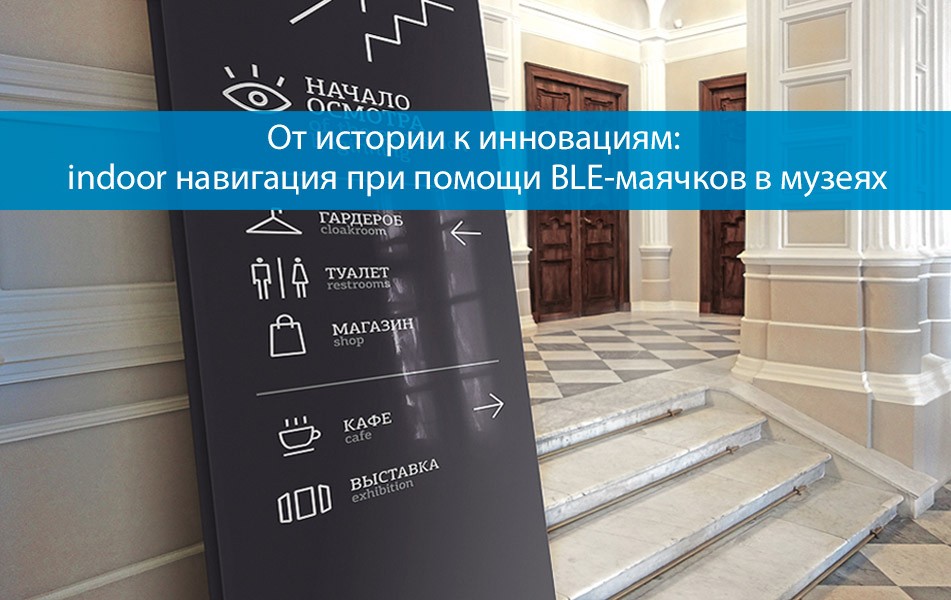Over the past few years, the ability to implement advanced communication applications and services supported by location information has contributed to the development of systems for locating people and objects indoors, including in museums. In parallel, the evolution of these systems was constantly supported by technological advances in the Internet of Things (IoT), specifically designed for low-cost short-range radio transmission, such as Bluetooth, as well as radio frequency identification technologies (RFID).
The problem of standardization of indoor navigation
Designing navigation systems based on short-range radio communication technologies is not a trivial task. In fact, the propagation of the radio signal inside buildings is influenced by several factors, such as building materials, facilities in the area, the presence of people, etc. All these factors can affect the quality of the received signal, which makes indoor localization very difficult and expensive when it is directly based on measurements of the physical parameters of the received signals from an object. Unlike outdoor navigation, which is mainly based on Global Navigation Satellite System (GNSS) technologies (for example, Global Positioning System, GPS), to date, indoor positioning systems have not yet been defined and standardized. The lack of standardization is mainly due to the very different characteristics of the areas served by the indoor localization system. As a result, this localization system is often developed specifically for a given area. At the same time, heterogeneous and often individual methods and processes for calculating location are used.
Proposed solutions
In this article, we will focus on the localization problem for a typical museum environment. The accessibility of information about the location of visitors in the museum can be used by the museum coordinator to promote communication services aimed at improving the overall “cultural experience.” In particular, location information can be useful to the museum operator for designing art exhibitions, determining individual routes according to the preferences of visitors, permanent or temporary installations, as well as for the care of collections. All these activities can be based on an analysis of visitor flows, for example, by observing the number of visitors stopping in front of a given work of art, or the amount of time spent in some museum rooms. In addition, assessments of the position of visitors can be used to improve their interaction with museum works of art in real time, for example, using augmented reality, which provides information about the works of art. In the latter case, each visitor is equipped with an intelligent device (for example, their own smartphone or tablet), which includes a device for communicating with the indoor localization system and is able to interact with the museum's indoor applications. At the same time, the device provides, for example, additional information about the observed or liked masterpiece, a work of art . The localization system can be deployed not only in the museum, but also in other rooms.

Technologies used
The system uses technology Bluetooth Low Energy (BLE) to collect data transmitted by a device belonging to each visitor. The main advantages of BLE are the availability of a large set of chips on the market and on modern smartphones or tablets, ease of programming and low power consumption. The resulting BLE-based localization system is inexpensive compared to other indoor location detection methods such as those based on (non-standard) RFID devices. In the localization system under consideration, the BLE signals emitted by the visitor's transmitters are received by BLE devices installed on the museum grounds. These devices can measure the received signal strength indicator (RSSI) and the signal-to-noise ratio (SNR) of each received signal, as well as extract the BLE transmitter identifier by extracting the corresponding message. The measured RSSI and SNR and the corresponding BLE message are then transmitted to a central server in the museum. The locator object on the server processes the received data and messages to determine the visitor's location on the object. The localization algorithm for each visitor is based on minimizing the objective function, which includes path loss measurements obtained from the corresponding RSSI and SNR. The optimal solution to the minimization problem corresponding to the expected position of the visitor was obtained by applying the nonlinear least squares algorithm (NLS).
The results show that the BLE transmitter can be localized with an accuracy of less than 1 m (i.e., the Euclidean distance between the true and estimated location is less than 1 m) when the BLE receiver is correctly positioned in the area. After training the neural network, the BLE receiver can better estimate distances based on RSSI and SNR measurements collected as the visitor moves around the artwork.
You can also find out more about the solutions used on the website Indoors Navigation.







3 thoughts on “От истории к инновациям: навигация при помощи BLE-маячков в музеях”
Теперь будет легче найти наиболее интересный экспонат
С такими инновациями в музеях явно станет больше посетителей!
А ведь эти технологии позволят расширить информационное наполнение традиционных музеев, разгрузить персонал гидов и экскурсоводов, и проводить аналитику интереса посетителей к экспонатам. Здорово!